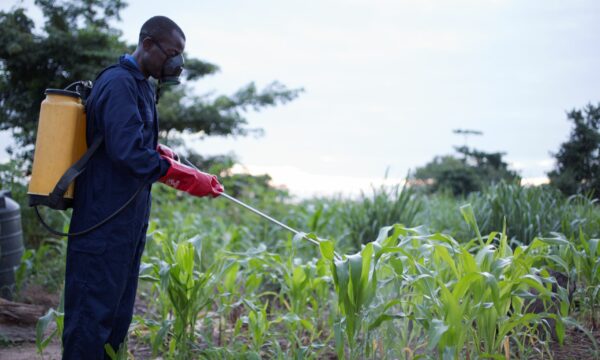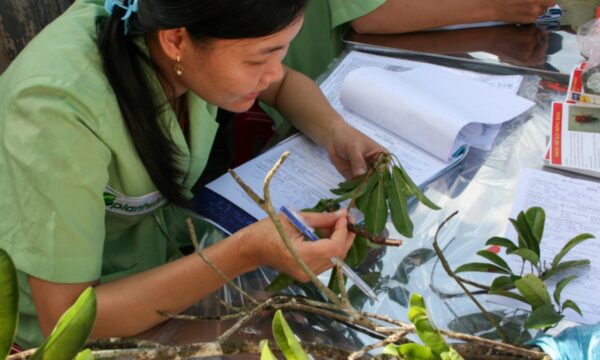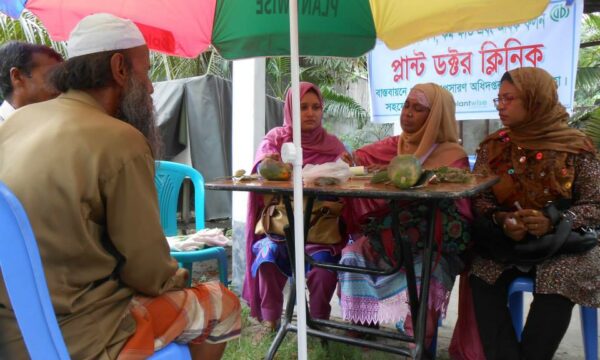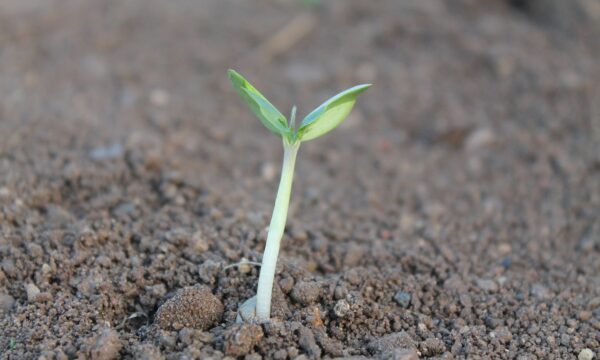According to CABI’s Peter Baker at the recent ISEAL Conference the International coffee community may be failing farmers in providing them with support in adapting to upcoming climate risks.
Changes in the climate can have dire consequences for farmers within developing countries. They can change the distribution ranges of insect pests, causing pests to migrate into new areas which are not prepared for them. Farmers may not have the knowledge to identify these new insect pests and take appropriate action to reduce the harm that they can cause to their crops.
As part of the Plantwise initiative CABI is increasing support to farmers face-to-face via a network of plant clinics in the developing world and also via a comprehensive global knowledge bank. Specially trained ‘plant doctors’ help farmers identify problems affecting their crops. Advice and treatment recommendations are offered along with information on the disease in local languages in the form of factsheets, leaflets and posters, an example being Coffee wilt disease.
Coffee wilt disease (CWD) is a major production constraint in Democratic Republic of Congo (DRC), Uganda and Ethiopia. It is caused by the fungus Gibberella xylarioides and is a devastating disease, decreasing farmer’s yields before eventually killing infected coffee trees.
CWD has occurred sporadically in Africa since 1927 but in the last decade or so it has become virulent, sweeping across many African countries (see the Plantwise distribution map for Gibberella xylarioides).
A Regional Coffee Wilt Programme was implemented in Africa from 2000 to 2007, under the supervision of the International Coffee Organization and executed by CABI, with funding and support from numerous organisations. 487,700 items of information materials (including leaflets and posters) about CWD were distributed throughout the coffee regions of Ethiopia, Uganda, Tanzania, DRC and Rwanda.
There is still hope for the coffee farmers as the Robusta variety (Coffea canephora) seems to be more resistant to the fungus. It is thought that its higher concentrations of caffeine inhibit the pathogen. Resistant cultivars of Robusta formed the basis of many of the West African breeding programmes.
Find out more about CWD and other plant diseases in the diagnostic search datasheets, treatment support factsheets and distribution map on the new Plantwise website http://www.plantwise.org/.
Related News & Blogs
How do pest risk registers address the spread of plant pests in Africa?
Pest risk registers can help to solve problems in agriculture, addressing the growing global threat of plant pests. Moreover, changing weather patterns, led by rising temperatures, are causing them to reproduce faster and expand into new regions. In ad…
10 July 2025





